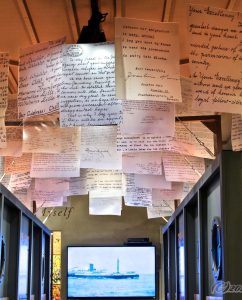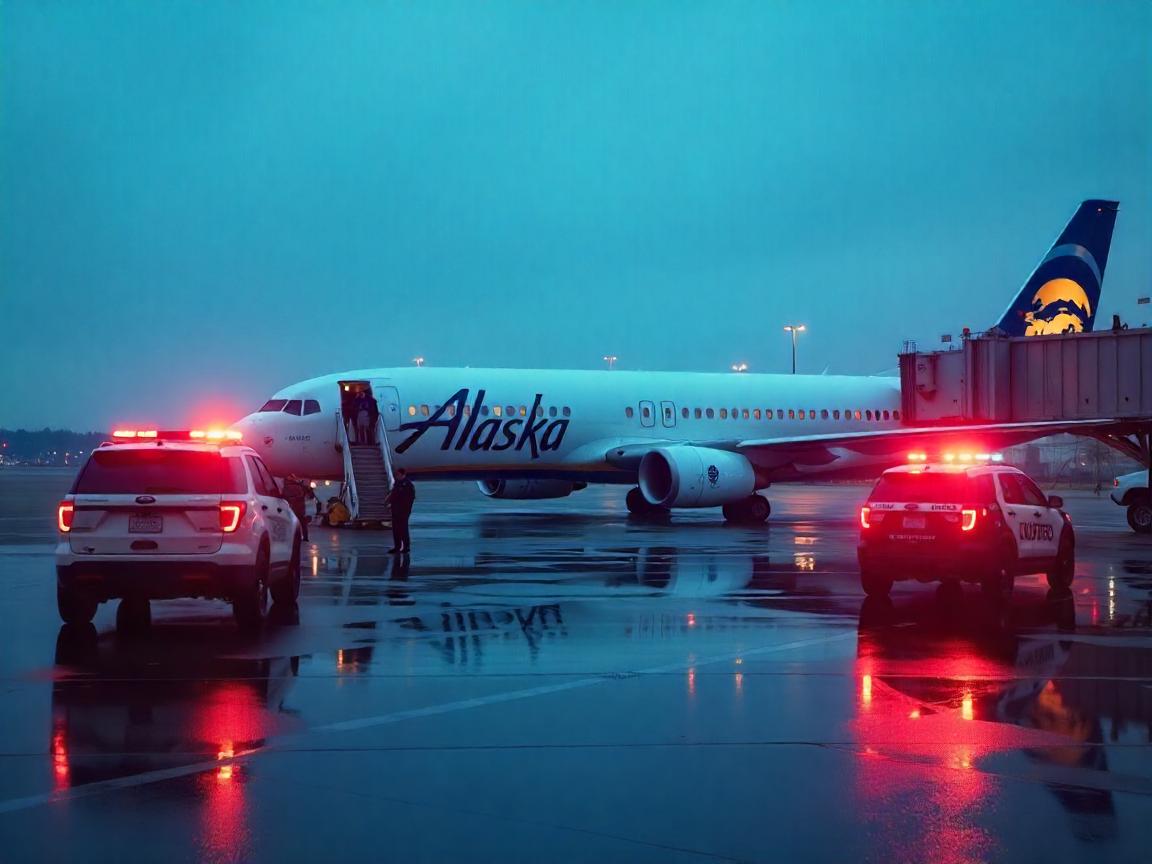Meet Leslie Fried, the curator and scenic artist illuminating Jewish history in Alaska
When Leslie Fried, ’08, moved to Anchorage in 2011 to work as an exhibition developer for a museum focused on Alaska’s Jewish community, she arrived to find a museum without a permanent home. Fried settled into an office in an old bank building and started preparing for the renovation of another site that would become the Alaska Jewish Museum.
When the museum opened in summer 2013, Fried filled it with permanent displays on the history of the state’s Jewish residents and their contributions to Alaska. “On the Wings of Eagles,” the first show she researched and designed for the museum, told the story of Alaska Airlines pilots and flight attendants who, in a series of missions from 1948 to 1950, airlifted about 45,000 Jewish refugees from Yemen to the new state of Israel.

Installation view of “A Refuge in the Last Frontier” exhibit at the Alaska Jewish Museum.
Fried says there are about 6,000 Jews in Alaska, nearly half of whom live in the Anchorage metropolitan area. Jewish entrepreneurs first arrived in the territory via San Francisco in the 1860s, around the time the U.S. purchased Alaska from Russia for $7.2 million. In the exhibition “From Purchase to Prosperity,” Fried curated the history of Jewish merchant-pioneers who created a mercantile empire as Alaska transitioned from territory to state.
Fried had moved from Seattle, where she had worked as a scenic and decorative painter for theater and film sets. She was head painter for the Intiman Theater for five seasons and designed and worked on projects for the Seattle Children’s Museum and Seattle Opera. But while working on a film set in 2003, she developed lead poisoning from exposure to welding fumes. She took time off to recover and realized she needed to make a career change.
On a visit to the East Coast, Fried reconnected with a friend and former mentor who asked about her plans. Fried, then 55, said she would like to be a curator. “He said, ‘At your age, you’re going to be competing against young grads coming out of Yale and NYU.’ He suggested I become a librarian,” she says. Fried’s friend was the retired chief librarian at Fairleigh Dickinson University. He had dedicated his time and energy outside of libraries to managing art estates, traveling and brokering deals.
With a new vision in mind, Fried enrolled in the iSchool to study library and information science which she combined with a graduate certificate in museology. While in graduate school, she was also serving as executor of the estate of her partner, Steven (Jesse) Bernstein, a writer and performance artist. In the late 1980s, Bernstein was well known in the Seattle arts and music scene as a poet, novelist and performer. He opened for grunge bands and had a reputation for unnerving his audiences by doing things like reciting poems with a live rodent in his mouth.
As she was collecting materials for his archives, Fried wrote to everyone Bernstein knew. Years later, while enrolled at the UW, she found a permanent home for the materials. She recruited two students to help with the cataloguing and worked with Anne Jenner in UW Special Collections to transfer the materials.
Fried’s writing skills have spilled into her creative life. In 2021, she published her first poetry collection, “Lily is Leaving.”
Today, at the Alaska Jewish Museum, Fried is the sole full-time employee. She plans and develops historical exhibitions, researches and writes instructional texts and writes grants to support programs. The Alaska Jewish Museum has outgrown its space. To mitigate this challenge, Fried has created virtual exhibitions on the museum’s website.
Fried says she draws inspiration from a Rudyard Kipling quote: “If history were taught in the form of stories, it would never be forgotten.”
“I choose to portray historical events in this way through oral histories, photos, film footage and in-person events,” Fried says. “Visitors really respond to this. Often they are moved to relate their own experiences.”











